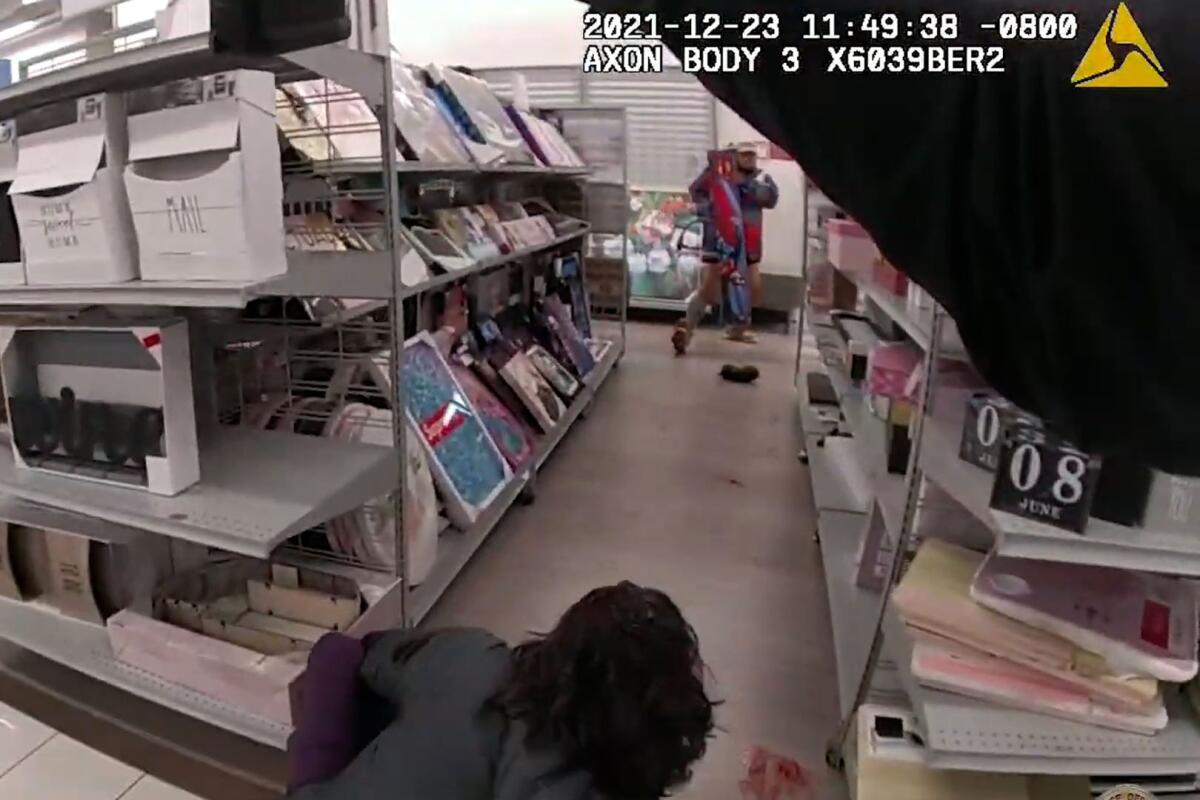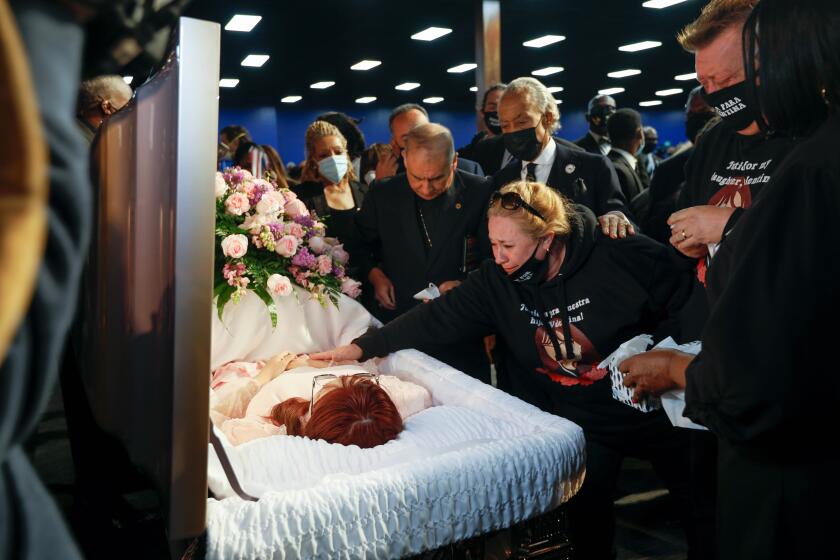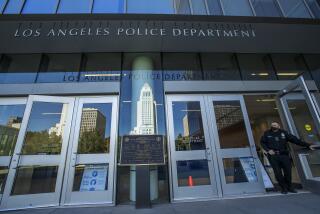After 2021 spike in shootings by officers, LAPD will audit its training on use of deadly force

- Share via
After a sharp increase in shootings by police in 2021 — including those of suspects who did not have guns — the Los Angeles Police Department will audit and revise how it trains officers in the use of deadly force, officials said Tuesday.
Chief Michel Moore said at a meeting of the civilian Police Commission that the LAPD is conducting a “deep dive” into its training program to assess whether it properly outlines existing department policies, which have gotten stricter in recent years, and makes clear to officers “the reverence for human life” that is required of them.
LAPD officers opened fire 37 times in 2021, killing 18 people — driven in part by a cluster of shootings in the final weeks of the year. That compares with 27 LAPD shootings, seven of them fatal, in 2020, and 26 shootings, 12 of them fatal, in 2019.
Of the 37 people shot last year, 22 had weapons such as knives or blunt objects but did not have firearms.
Among them was Daniel Elena Lopez, a 24-year-old who was seen assaulting customers with a bike lock in a North Hollywood Burlington store two days before Christmas. Officers rushed in, and one opened fire with a rifle — killing Elena Lopez but also killing 14-year-old Valentina Orellana Peralta, who was hiding with her mother in an adjacent dressing room.
‘My daughter was an angel whose mission was to bring peace and love,’ said Valentina Orellana Peralta’s mother, Soledad Peralta.
That shooting brought international condemnation and scrutiny for the LAPD’s tactics in such scenarios, adding to a steady drumbeat of criticism from local activists and the loved ones of others killed or wounded by police in recent years.
It also raised questions about the department’s policies for increasingly prevalent “active shooter” situations, and how officers responding to such chaotic and potentially deadly scenes are meant to proceed.
While Elena Lopez did not have a firearm, at least one 911 caller reported that he did, and that shots had been fired at the store. Officers were informed of this report, and of the fact that there were other customers sheltering in place at the store, before they entered. They appeared to be approaching the situation as if there were an active shooter in the store, despite hearing no gunfire.
During Tuesday’s meeting, LAPD officials walked commissioners through existing training protocols for active-shooter scenarios — outlining how officers are meant to be aware of their surroundings and what may lie behind a target, particularly when they are using high-power rifles that can pierce walls. They are also meant to listen for gunfire and reassess the situation if they hear none, officials said.
After Moore professed his commitment to reviewing all training around the use of deadly force, Commissioner Eileen Decker — a former federal prosecutor — asked for specifics.
Decker asked if the review would consider whether training matches policy, whether “stronger words or maybe different language” is needed to stress that lethal force “should be a last resort” and whether the department’s training adequately teaches officers all of the considerations they must make before opening fire in “crowded, densely populated” places.
Moore said all would be under review.
Moore said the review will consider whether current training adequately addresses the existing requirements that officers use de-escalation techniques; redeploy to buy themselves time and create more space between themselves and suspects; and utilize less-lethal weapons, such as foam rounds, whenever possible before opening fire, Moore said.
He said the review also will examine whether officers are giving themselves and colleagues enough time to use less-lethal weapons, and for the effects of those tools to set in, before resorting to firing live rounds — particularly in instances where suspects do not have firearms. It will consider whether officers in such situations are “accurately interpreting” the degree to which they or others are in “imminent peril” before opening fire.
Moore said the rise in shootings in 2021 marked a sad slide backward from the 30-year low in LAPD shootings achieved in 2019, and is being taken seriously.
Valentina’s family is the latest that has lost a loved one to LAPD gunfire to denounce the department and call its tactics into question. However, Moore said he had challenged his staff to begin the review prior to the Burlington shooting, having identified beforehand the increased incidents of officers shooting individuals who had weapons other than firearms.
The trend is one local activists and families have called out repeatedly in recent years, and one that The Times highlighted in March and again in June — specifically, concerns about police shooting people who have “edged” or blunt objects and appear to be in mental crisis.
LAPD data reviewed by The Times at that time showed that about 22% of police shootings between 2015 and 2019 involved suspects who were allegedly armed with “edged weapons” or “impact devices.”
In 2021, that figure stood at nearly 60%, police say.
More to Read
Sign up for Essential California
The most important California stories and recommendations in your inbox every morning.
You may occasionally receive promotional content from the Los Angeles Times.











